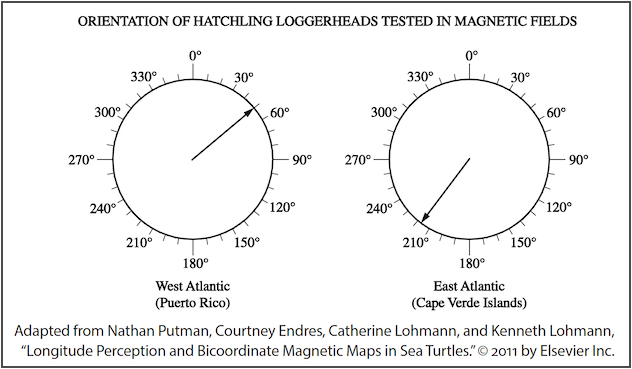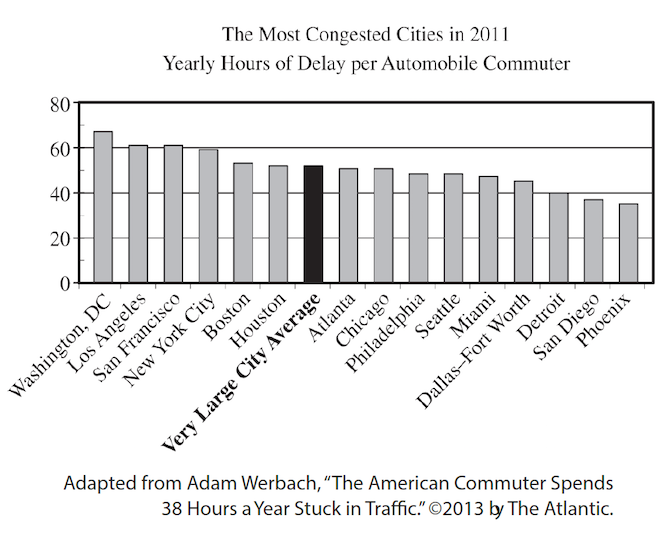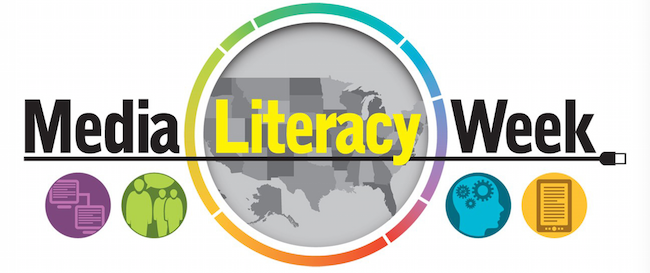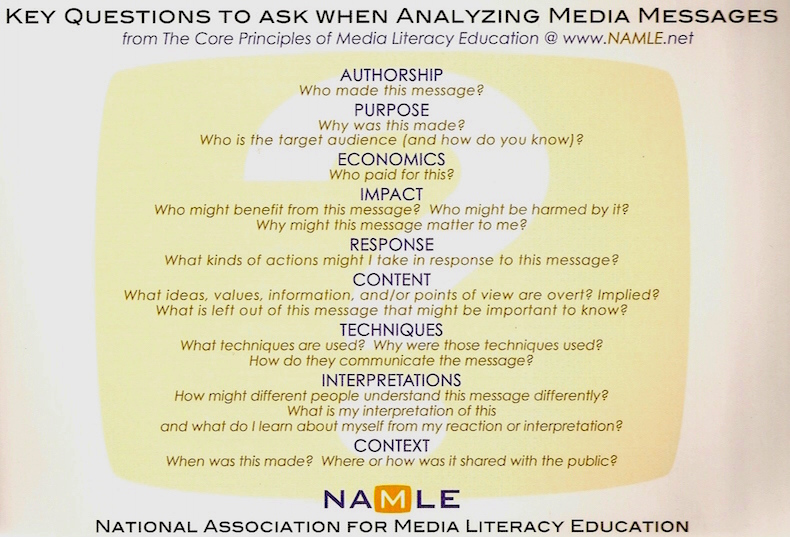Why Media Literacy Week Matters So Much
 The 3rd Annual U.S. Media Literacy Week will be observed November 6 through November 10, 2017. You can help spread the word using the hashtag #MediaLitWk. Here, noted author and consultant Frank W. Baker (@fbaker) offers clear evidence for the need to raise awareness about media literacy in a world saturated by media messages.
The 3rd Annual U.S. Media Literacy Week will be observed November 6 through November 10, 2017. You can help spread the word using the hashtag #MediaLitWk. Here, noted author and consultant Frank W. Baker (@fbaker) offers clear evidence for the need to raise awareness about media literacy in a world saturated by media messages.
By Frank W. Baker
The news is filled with headlines that continue to demonstrate why teaching media literacy is more important than ever. For example:
November 2016: Headline – Most Students Don’t Know When News is Fake, Stanford Study Finds (Source)
This Wall Street Journal story was among the first to call attention to the problems students have when encountering ad, opinions and news online. The study was a wake-up call to educators nationwide to give more attention to media literacy, information literacy, news literacy and critical thinking.
September 2015: Headline – Most people think native ads are real articles – and they later feel duped (Source)
Native ads are vaguely disguised and frequently appear in news feeds and on other websites. Often times these “ads” are labeled, but despite that many people were fooled according to the study by the marketing firm Contently. (Here’s an example at the New York Times.)

If ever there was a need for media literacy, this is evidence.
August 2015: Headline – 2016 SATs Will Put Stronger Emphasis on Graphic Literacy. (Source)
The article acknowledges that more information is being conveyed visually and it’s vital that today’s students know how to interpret it. The article also notes that students who take the standardized college admissions test will be exposed to graphic literacy questions not only in math but also in the reading and writing portions of the test. An executive of the College Board, which owns and publishes the SAT, says “being a literate consumer of that (kind of visual) information is valuable regardless of your career.”

Teachers: are you using infographics or other visual displays of information with your students? Now might be a good time to start.

In a world where social media, music, television and movies attract the attention of young people, we need to acknowledge that teaching about the media can no longer be ignored in the nation’s classrooms.
Celebrate and Promote Media Literacy Week
The first week in November has been designated as Media Literacy Week by the National Association of Media Literacy Education (NAMLE). The week has been established to highlight the power of media literacy education and its important and relevant role in education today.
During this week, NAMLE is celebrating those organizations and educators who are taking time to demonstrate the importance of media literacy in a world where media dominate.
Every educator who uses images and videos in instruction should be interested in what media literacy aims to do. One of its objectives is to create “healthy skeptics” among those who consume media. Another objective is to turn “passive viewers” into “active, critical viewers.” Additionally, media literacy aims to balance the analysis of media messages with the opportunity to engage students in creating media productions.
Some teachers tell me they don’t have time to add another thing to their crowded plate. My response is: if you don’t take the time, then you’re not fully preparing your students to live and work in the 21st century.
Jim Burke, author of The English Teacher’s Companion (3rd Ed.), referenced the importance of using popular culture in his chapter on media literacy:
Movies, advertisements, and all other visual media are tools teachers need to use and media we must master if we are to maintain our credibility in the coming years.”
But don’t mistake media literacy as just the responsibility of the English teacher. In a study I conducted in 1999, elements of media literacy were also found in the teaching standards of Social Studies and Health. Today we can add Arts, Technology, Math, Science and much more.

►The College Board
►Partnership for 21st Century Skills
►National Board of Professional Teaching Standards
►National Council of Teachers of English
►National Council for the Social Studies
►Workskills 2020 Report
►All these 2017 Media Literacy Week partners
The introduction to the Common Core ELA standards makes a reference to the importance of our students being able to analyze and produce both print and non-print messages. That’s a direct reference to media literacy.
As a media educator for more than 20 years, I’ve conducted hundreds of workshops across the US. I created a website (The Media Literacy Clearinghouse) and wrote several books because I want to help teachers better understand not only what media literacy is, but also how to engage students with it. With support from MiddleWeb, I’ve written dozens of articles here examining how we can teach media literacy today.
Defining Media Literacy
The phrase “media literacy” has many meanings. I am fond of this definition created in 1998 by the Ontario Ministry of Education:
“Media literacy is concerned with helping students develop an informed and critical understanding of the nature of mass media, the techniques used by them, and the impact of these techniques. More specifically, it is education that aims to increase the students’ understanding and enjoyment of how the media work, how they produce meaning, how they are organized, and how they construct reality. Media literacy also aims to provide students with the ability to create media products.”
But media literacy educators also know that our students need to understand and recognize bias, representation, and propaganda, as well as the meanings behind the messages; the economics of the messages; how audiences perceive the messages, and much more.
Media educators also recognize that media ARE texts – designed to be read, analyzed, interpreted and deconstructed. (Do you know how to teach media as text?)
That magazine in your school library, that news photo in your news feed, that tweet in your Twitter account and that image on Instagram are ALL media that can (and should) be used to teach media literacy. Educators should also give strong consideration to using a commercial or sitcom from television as well as a movie trailer or film clip. These are the media our students are exposed to on a weekly if not daily basis.
Media Literacy = Critical Inquiry
Those who teach media literacy know that we can engage students in media by first helping them learn to question the media. Asking questions is paramount, but not just any questions – asking the right questions –according to Elizabeth Thoman, past director of The Center for Media Literacy.
NAMLE has created this nice reproducible graphic that introduces the kinds of questions teachers could use with their students:
Taking Media Literacy to Class
In a magazine ad for pizza, included in this column I wrote previously for MiddleWeb, one of the key questions for students to consider is: what is omitted – what are we not told? We don’t know the price nor do we know the nutritional value of the product. But those are two things students could research and determine the answers.
In a publicity still from a movie, as seen in this 2015 MiddleWeb column, teachers can help students understand the language of film – the fact that filmmakers use tools and techniques to imply meaning.

A toy commercial, aired on Saturday morning children’s television, is another perfect opportunity to teach techniques of persuasion as well as techniques of production. These kinds of ads are airing now until the holidays. I’ve written about teaching media literacy using toy ads here.
Teaching students about scripts is another way we help them understand how media are made. Most media start out as writing, and my website has recommendations related to digital storytelling as well as writing for news, television, film and more.
A Challenge
During Media Literacy Week, I want to know: how are you engaging students in media literacy? What’s their reaction when you use the media they see every day in instruction? Share your comments below. What should we be teaching about media?
In the meantime, tune in to current events and popular culture: you will find plenty of material that is both a teachable moment and a great media literacy opportunity.
Frank W. Baker is the author of Media Literacy in the K12 Classroom (2nd ed, ISTE) and the forthcoming Close Reading The Media: Literacy Lessons and Activities for Every Month of the School Year (2017, Routledge / MiddleWeb). He maintains the popular Media Literacy Clearinghouse website. He has conducted hundreds of professional development workshops for educators at schools, districts and conferences. You can follow him on Twitter @fbaker.




































